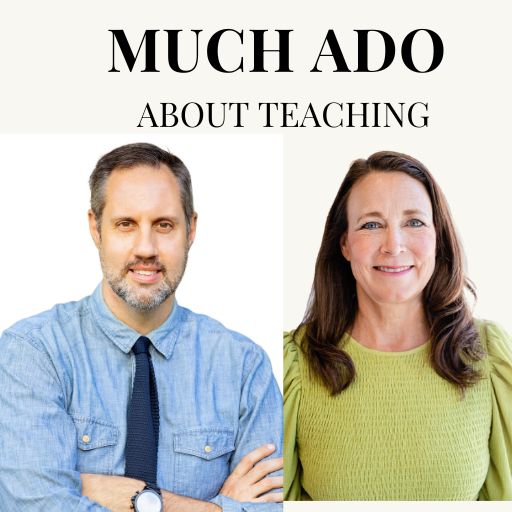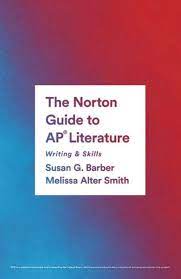And that’s a wrap on another reading. This year I read for Q1 – “The Barren Moors.” In general, the prompt and poem were accessible and students tended to write a lot. Compared to prior years (with the possible exception of “Shaving”), there were few blank responses to the poem. So let’s break this down.
What students did well
Thesis:
The far majority of responses earned the thesis point by noting how the speaker’s experience was complex because the moors were isolated yet peaceful or the retreat to the barren moors provided an escape from society.
Commentary and Evidence:
So many responses were organized around shifts within the poem which in most cases provides an organic line of reasoning (LOR). Common LORs I came across included –
- Physical space ——> emotional response
- Isolation in the moors ——> escape from world’s troubles
- Negative elements of the moors (isolation) ——–> positive elements (peace, escape)
- Desolate/barrenness/isolation ———> refuge, escape
- Concrete description/response ——–> theoretical/abstract/philosophical meaning
Students are also really good at identifying devices and providing general analysis of them. Similes (desert Islands far at sea, crags, clouds), symbol (fox), metaphor (deserted hall, two silent floors), repetition, rhyme scheme. Also students are identifying apostrophe even though most don’t call it that (rather directly addressing) of the barren moors which is totally fine! (And shout out to the AP Lang teachers who are teaching anaphora; students are listening).
Commentary that was built around word/phrase level as opposed to lengthier quotes (anywhere from 2 – 4 lines of the poem) offered more in depth analysis. For example, many responses focused on the phrase “a friend’s cold eye” or “agitating world” and used these to build an interpretation that the moors offered a place of escape. Many responses also spoke to the capitalization of “Islands” and “Life” emphasizing their importance. Many responses ended with analysis on the word “creature” in the last stanza or the repetition of “I stand” in the 4th and 7th stanza and “To stand” in the last line. Responses that incorporate the last stanza usually show that students have an understanding of the entire poem and there’s a sense of completeness to the response. This is, of course, not necessary but is nice. (What my syntax-loving self wanted to see and didn’t, however, were responses focusing on the next to last line and the significance of “I stand” being separated).
Sophistication:
Path 1 in Row C was where I saw the most sophistication points awarded. These responses explored the tensions between the harsh (bare rocks, crags, desolate) and soft (shores, soft as silence) diction and how that mirrors the internal nature of the speaker, the irony in the lonely fox making the speaker feel less isolated, and the two silent floors. I never cease to be impressed with what some students are able to do with a cold read in a timed setting!
Where students can improve
Thesis:
Many responses had a statement at the beginning which went something like: In “The Barren Moors” Channing uses diction (students love diction), tone, and imagery (fill in numerous devices here) to show the speaker’s complex experience with the natural setting. While a statement like this would not earn the thesis point, most students would include some type of defensible claim typically in the first paragraph even though it wasn’t unusual to find the thesis as the very last sentence, and we were able to award the point.
Commentary and Evidence:
Responses that scored a 2 or lower in Row B primarily did so for two reasons:
- Not offering commentary on devices or connecting back to the thesis.
Many responses simply identified or summarized devices. One technique in particular that I observed that students did not know how to analyze was rhyme scheme. I have a lesson brewing in my head that I’m going to write out as soon as I get back from vacay.
- Faulty lines of reasoning.
These responses circled around the same point about appreciation for the moors, the moors being a place of peace, or the speaker feeling isolated but never showing a progression of ideas. Some of these ideas were good, but the response focused on the same idea throughout.
Another commonality among 1-3-0 or below responses was these essays were typically organized by device as opposed to insight. Responses would have a paragraph about apostrophe, symbolism (Hello, Mr. Fox), and ______________ fill in the blank for another device. The topic sentence of each paragraph would be identifying the device followed by a quote and then analysis. Again, these essays would often score a 1-3-0 but stronger essays either organized by pairing a device with an insight and pulling in other devices for support or building paragraphs around an insight that relates back to the thesis (a mini-thesis) with multiple devices and analysis for support. As noted earlier, some of these responses were organized by shifts where students worked their way chronologically through the poem. (I almost hesitated to put this point in because some teachers will reach out and say, “My students always organize by device and make 5s on the exam.” This, however, is what I noticed).
Teaching points for the classroom
- Give the prompt with the part about devices removed and let students read the poem/prose and work on developing insights before thinking about devices. Read the poem, note shifts, write an insight for each shift.
- Put the thesis at the beginning and have another student or myself check it before writing. We do this all of the time in my class. Students – even in a timed setting – will read, think, craft a thesis, and bring it up for me to check before they settle into writing. Some of my best conversations happen in these mini-writing conferences.
- To avoid helicopter writing (hovering over the same idea throughout) and focus on LOR, have students trade essays and outline or create a flow chart of the progression of ideas. If a peer is not able to do this, what could make the LOR stronger? Transitions to help the reader understand the relationship between ideas? Organization of the ideas – experimenting with placement of ideas within a paragraph?
- I am working on a lesson about rhyme because so many students want to write about but can’t get any further than “the rhyme creates a sing-song feeling.” Stay tuned – I hope to have the lesson finished by the end of the month and will most likely use “The Barren Moors” in it.
Also I so enjoyed meeting so many people are the reading and am always in awe of the dedication and creativity of teachers. Each year I leave the reading inspired by our community. Thank you!
Josh Epstein from the amazing table 16 put together this playlist inspired by “The Barren Moors” – enjoy! https://music.apple.com/us/playlist/dim-uncertainties/pl.u-vxvjFzybPJP


Susan Barber teaches AP Lit and Writers Workshop/Advanced Composition at Midtown High School in Atlanta, Georgia and serves as the College Board Advisor for AP Lit. In addition to reading, writing, and investing in the next generation, she loves watching college football with her family especially when Alabama is playing.













One comment